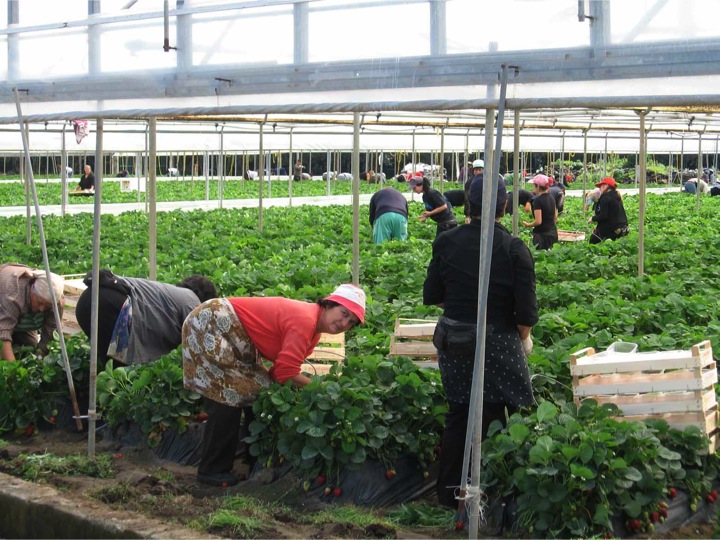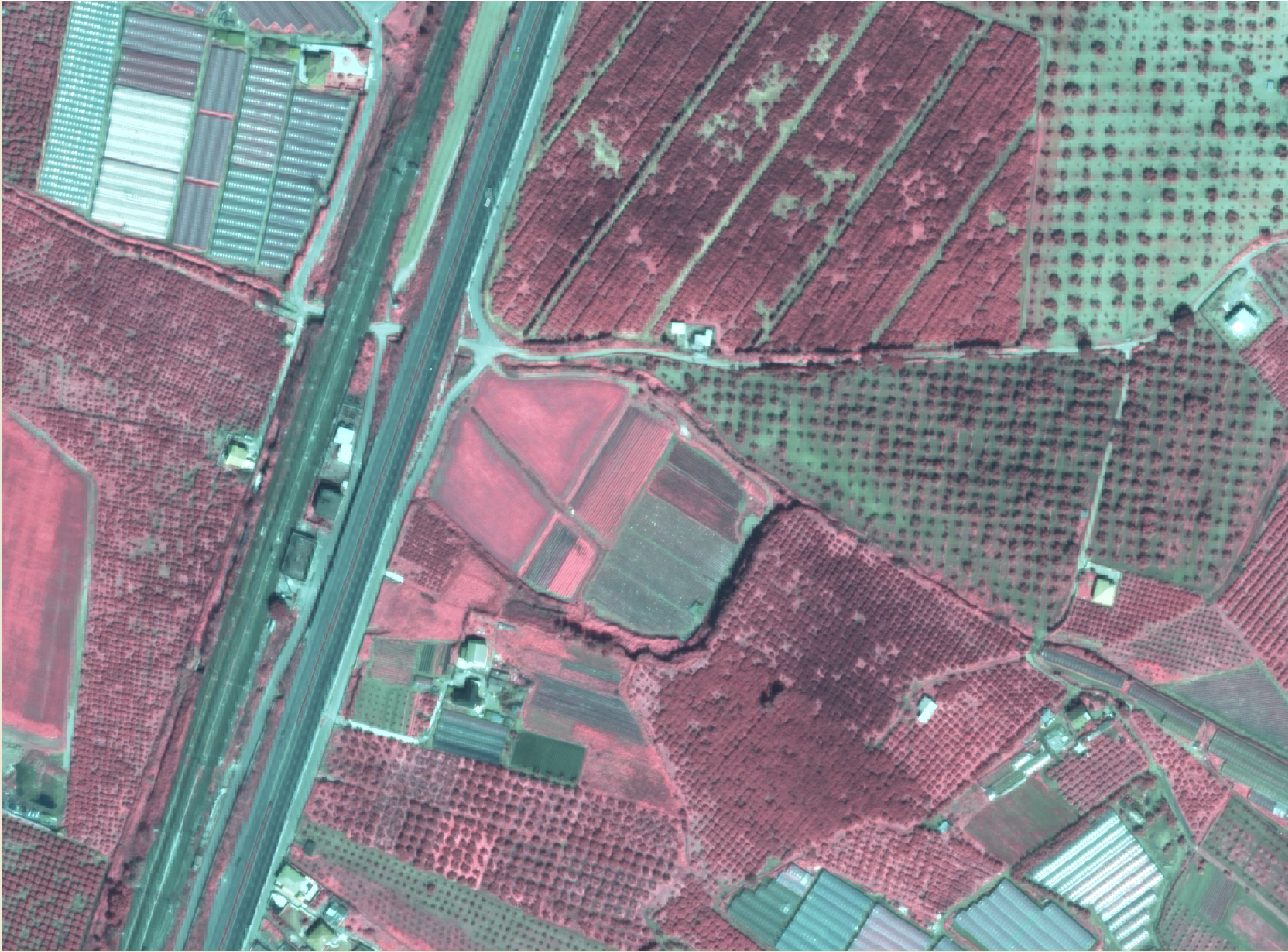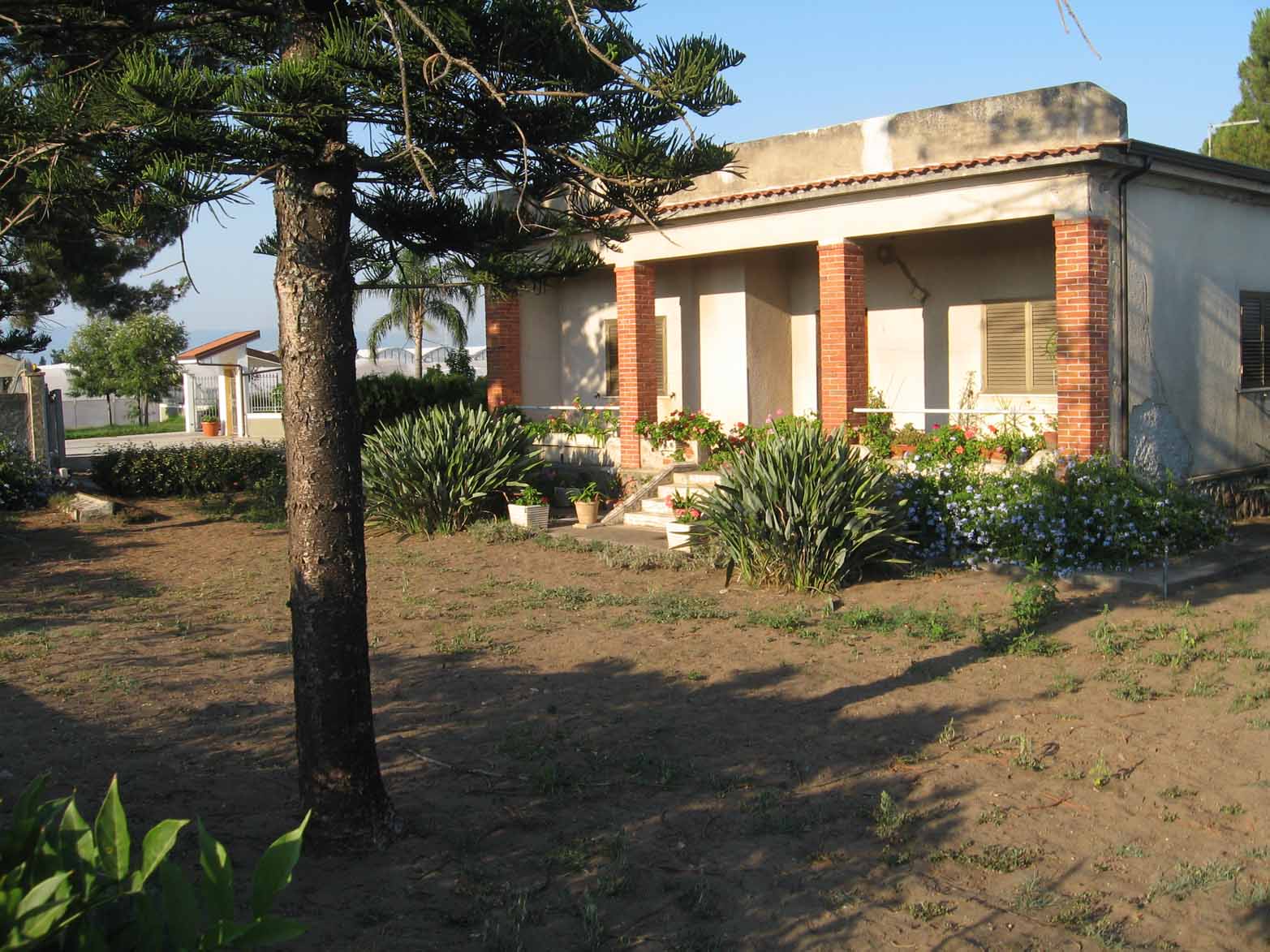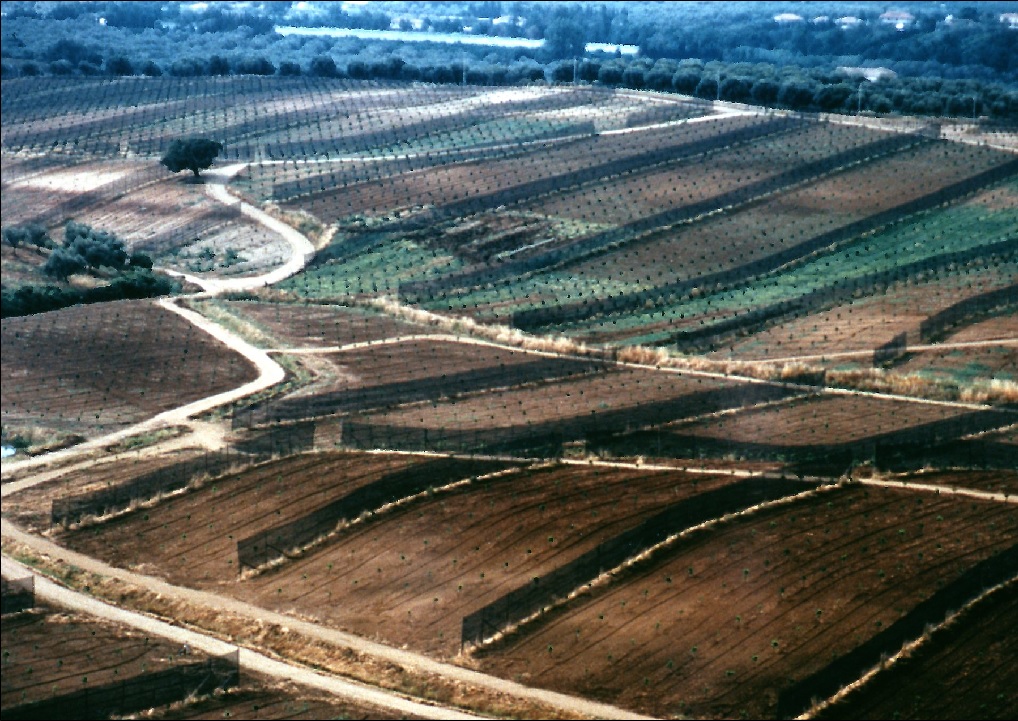Fields in Flux
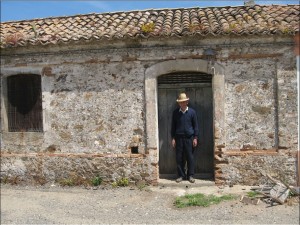 When the longitudinal study began in 1980, the team doing the fieldwork had no idea the landscape at Acconia would be so restless. Each mapping brought the researchers to a place quite different than the one they had studied 9 years before—thus echoing the ancient Greek proverb of the philosopher Heraclitus: one cannot step in the same river twice. From marginal wetlands plagued with malaria
When the longitudinal study began in 1980, the team doing the fieldwork had no idea the landscape at Acconia would be so restless. Each mapping brought the researchers to a place quite different than the one they had studied 9 years before—thus echoing the ancient Greek proverb of the philosopher Heraclitus: one cannot step in the same river twice. From marginal wetlands plagued with malaria  sprang up over the years an economy oriented toward agro-business. Open fields became enclosed by fences and covered by a sea of plastic greenhouses. The simple shelters for herdsmen called pollaios, or chicken coops, gave way to strawberry mansions. The same town which many young men left to seek work in Germany or Switzerland is now home to immigrant workers from Romania and Bulgaria. From an agricultural boom to the current downturn, Acconia has witnessed an incredible breadth of changes over the span of a single human lifetime and the question now is what makes these changes tick?
sprang up over the years an economy oriented toward agro-business. Open fields became enclosed by fences and covered by a sea of plastic greenhouses. The simple shelters for herdsmen called pollaios, or chicken coops, gave way to strawberry mansions. The same town which many young men left to seek work in Germany or Switzerland is now home to immigrant workers from Romania and Bulgaria. From an agricultural boom to the current downturn, Acconia has witnessed an incredible breadth of changes over the span of a single human lifetime and the question now is what makes these changes tick?
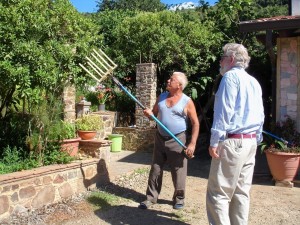 The study of landscape dynamics explores these unseen factors. The concept has only entered the mainstream consciousness of anthropologists recently in the 1990s and with some reticence. For surveys to make observations on modern land use has been standard practice since the 1960s, but those instances were invariably synchronic in nature with no sense of how land use has changed over time. The search for sites in any survey occurs within a window of time with landscape being a huge factor on what is found. The longitudinal study at Acconia has recorded not only the landscape itself but a team of anthropologists conducting interviews with local informants (as pictured right with anthropologist Harold Koster) have investigated the many different factors behind its transformations. Here we will explore a few of these, and more can be found with greater depth here: Acconia_Land_Use_2010
The study of landscape dynamics explores these unseen factors. The concept has only entered the mainstream consciousness of anthropologists recently in the 1990s and with some reticence. For surveys to make observations on modern land use has been standard practice since the 1960s, but those instances were invariably synchronic in nature with no sense of how land use has changed over time. The search for sites in any survey occurs within a window of time with landscape being a huge factor on what is found. The longitudinal study at Acconia has recorded not only the landscape itself but a team of anthropologists conducting interviews with local informants (as pictured right with anthropologist Harold Koster) have investigated the many different factors behind its transformations. Here we will explore a few of these, and more can be found with greater depth here: Acconia_Land_Use_2010
 Acconia was first made a viable home for the future agro-businesses by a number of infrastructure improvements enacted in the years around the second world war. Mussolini’s regime began the draining of the wetlands. After the invading Allies introduced DDT and the post-war Italian government furthered its use, the land became hospitable, with malaria fully eradicated in the 1950s. Around the same time, the coastal road was improved and paved increasing year-round accessibility and then the autostrada was completed in 1973 decreasing the travel time to Naples and on to Rome. Through government investment, agricultural products could now be grown in Calabria and sold in markets up and down the peninsula.
Acconia was first made a viable home for the future agro-businesses by a number of infrastructure improvements enacted in the years around the second world war. Mussolini’s regime began the draining of the wetlands. After the invading Allies introduced DDT and the post-war Italian government furthered its use, the land became hospitable, with malaria fully eradicated in the 1950s. Around the same time, the coastal road was improved and paved increasing year-round accessibility and then the autostrada was completed in 1973 decreasing the travel time to Naples and on to Rome. Through government investment, agricultural products could now be grown in Calabria and sold in markets up and down the peninsula.
 Large scale agriculture did not start until the influence of certain innovators arrived in Acconia. The noble landowning families previously had used their holdings almost exclusively for hunting and the grazing of animals. Francesco Baglione (left) from Sicily, attempting to expand his nursery business, convinced the nobles to start planting olive groves. Thus, these great plots of land began to be controlled and cultivated. Later Mario Fattori (right) arrived from Bologna where
Large scale agriculture did not start until the influence of certain innovators arrived in Acconia. The noble landowning families previously had used their holdings almost exclusively for hunting and the grazing of animals. Francesco Baglione (left) from Sicily, attempting to expand his nursery business, convinced the nobles to start planting olive groves. Thus, these great plots of land began to be controlled and cultivated. Later Mario Fattori (right) arrived from Bologna where  there already existed a well-developed tradition of intensive horticulture and implemented the same techniques at Acconia, growing as many as 30 hectares of strawberries. Many who worked alongside him learned from him and soon started their own operations. Another innovator, Maria Cefaly, from a noble family, was forced to adapt after her father and grandfather had run down the family estate. To gain an edge over the competition elsewhere in Italy, she introduced new machinery for shaking the olive trees more quickly and new methods for pressing the olives to produce high quality oil. These three, among others, spurred Acconia towards prosperity.
there already existed a well-developed tradition of intensive horticulture and implemented the same techniques at Acconia, growing as many as 30 hectares of strawberries. Many who worked alongside him learned from him and soon started their own operations. Another innovator, Maria Cefaly, from a noble family, was forced to adapt after her father and grandfather had run down the family estate. To gain an edge over the competition elsewhere in Italy, she introduced new machinery for shaking the olive trees more quickly and new methods for pressing the olives to produce high quality oil. These three, among others, spurred Acconia towards prosperity.
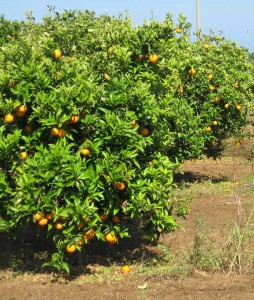 In addition to building infrastructure, the government has steered the course of the landscape through policy. In 1988, the
In addition to building infrastructure, the government has steered the course of the landscape through policy. In 1988, the  Italian government alongside the EU started a program to revive “traditional” forms of agriculture in southern Italy. In the case of Acconia, this meant planting new citrus groves. With the state’s financial support, many of the larger landowners soon turned over their fields of olive trees (for their profitability had been diminished by an earlier trade agreement between Italy and other Mediterranean countries) and planted orange trees in their stead. The landscape was transformed, but the effects were not over yet. By the late 1990s, all the new citrus groves, now mature enough to produce on a regular basis, led to the over-production of oranges and prices fell. With the downfall of this sector, citrus trees now only constitute a viable form of production when aided by a government subsidy introduced in 2010.
Italian government alongside the EU started a program to revive “traditional” forms of agriculture in southern Italy. In the case of Acconia, this meant planting new citrus groves. With the state’s financial support, many of the larger landowners soon turned over their fields of olive trees (for their profitability had been diminished by an earlier trade agreement between Italy and other Mediterranean countries) and planted orange trees in their stead. The landscape was transformed, but the effects were not over yet. By the late 1990s, all the new citrus groves, now mature enough to produce on a regular basis, led to the over-production of oranges and prices fell. With the downfall of this sector, citrus trees now only constitute a viable form of production when aided by a government subsidy introduced in 2010.
On a more basic anthropological level, the structure of the family can influence heavily whether an operation succeeds or not. A worker from within the household does not receive taxable pay so no money is lost to the government. Otherwise, one must hire outside help to oversee the field-hands or take the produce to market and this can be very costly. In recent years, the problem has become more acute as the cost of labor has risen and as young people across southern Italy are losing interest in the agricultural pursuits of their parents, choosing instead to take jobs in other sectors. When the sons and daughters with skills and experience no longer stay, the future of many operations hangs uncertain.


